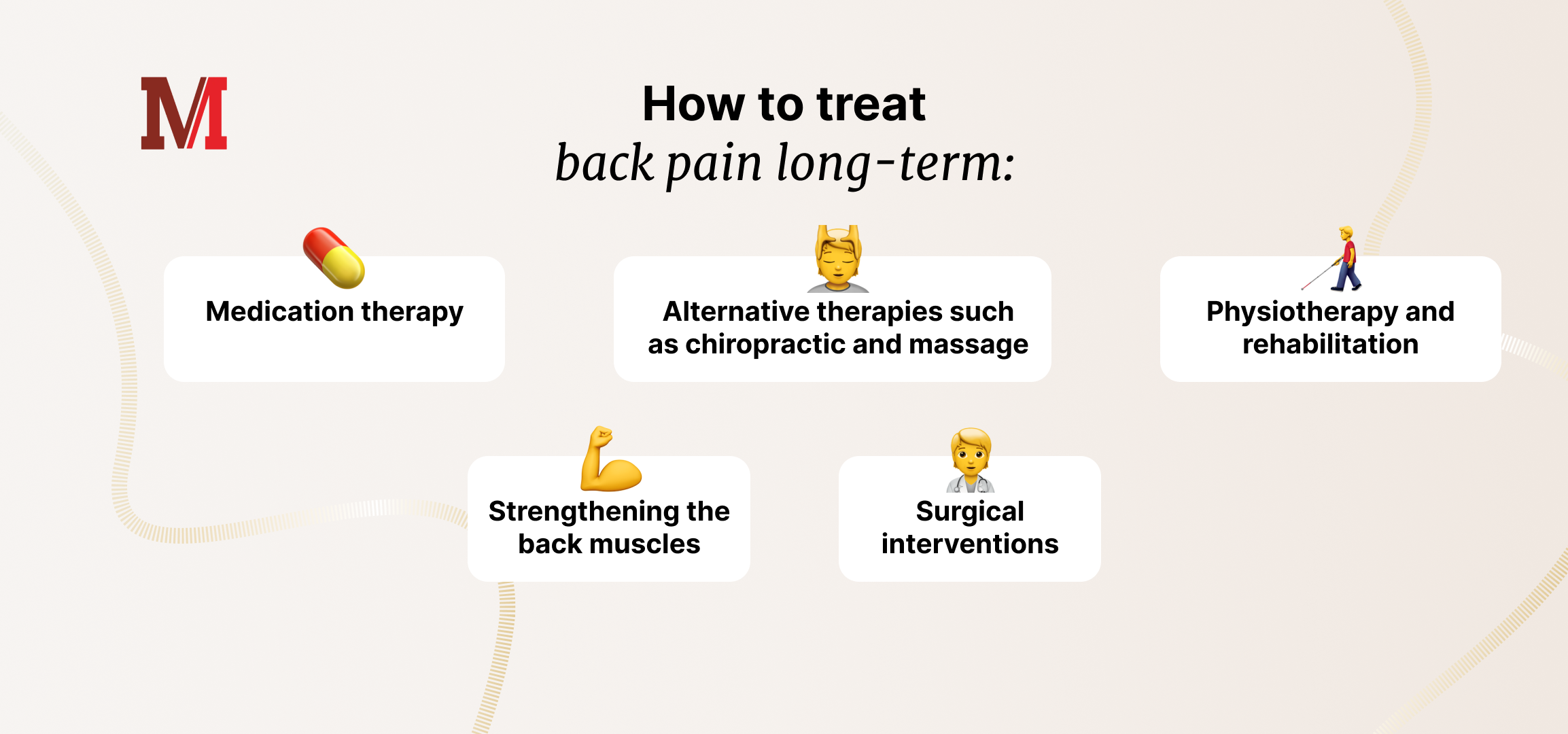
Back pain is a widespread problem that can affect people of all ages and life situations. Whether caused by incorrect posture, lack of exercise, sedentary activities, or other causes, back pain can significantly impact daily life and restrict quality of life. However, there are ways to prevent and effectively treat back pain.
In this blog article, we will present various strategies and measures that can help you maintain a healthy back or alleviate pain if it has already occurred. From simple changes in daily life to targeted exercises and therapies, we will provide you with practical tips and information that you can implement immediately.
So, get comfortable, take a moment, and learn how you can actively contribute to avoiding or treating back pain and keeping your back strong and healthy.
-
How can I prevent back pain?
-
How can back pain be treated?
-
When should I see a doctor for back pain?
1. How Can I Prevent Back Pain?
Back pain can be a significant burden in daily life and restrict quality of life. Fortunately, there are various measures that can help alleviate back pain. The following are some helpful tips and strategies to help you alleviate back pain in your daily life.
Heat applications and cold treatments
Both heat and cold treatments can be effective in relieving back pain. Applying heat, such as with a hot water bottle or a warm towel, can improve blood circulation, relax muscles, and alleviate pain. Cold treatments, such as applying a cold pack or ice bag, can reduce inflammation and decrease swelling. It is recommended to apply heat or cold treatments for about 15-20 minutes and repeat them regularly.
Spinal decompression
The correct sleeping position and a suitable mattress play an important role in spinal decompression and reducing back pain. It is recommended to sleep on a mattress that is neither too hard nor too soft and provides adequate support. An ergonomic sleeping position, where the spine remains in a neutral alignment, can also be helpful. This can be achieved by placing a pillow under the knees when lying on your back or adopting a side position with a pillow between the knees.
Stress reduction and relaxation techniques
Psychological stress can have a negative impact on the back and exacerbate existing back pain. Therefore, it is important to reduce stress and incorporate relaxation techniques into daily life. Regular breaks, deep breathing exercises, meditation, yoga, or other relaxation techniques can help reduce muscle tension in the back and alleviate pain.
Ergonomic aids and back supports
Using ergonomic aids at work or at home can promote a healthy posture and relieve the back. An ergonomic office chair, a keyboard and mouse in the correct position, an adjustable-height desk, and a good back support are just a few examples of aids that can help prevent back pain.
Stretching and relaxation exercises for the back
Targeted stretching and relaxation exercises can improve the flexibility of the back muscles and release tension. There are various exercises, such as the cat-camel stretch or bringing the knee to the chest, that gently stretch and relax the back. Yoga poses like downward-facing dog or cobra can also be helpful. It is important to perform these exercises regularly and pay attention to the individual needs and limitations of your own body.
2. How Can Back Pain Be Treated?
Severe or persistent pain should not be ignored. Here are some treatment approaches that have proven effective for back pain.
-
Medication therapy: Pain relievers such as nonsteroidal anti-inflammatory drugs (NSAIDs) are commonly used for short-term relief of back pain. They can help reduce pain and inflammation. Muscle relaxants may also be prescribed to relieve muscle tension and alleviate pain. It is important to use these medications under medical supervision as they can have side effects and may not be suitable for everyone.
-
Physical therapy and rehabilitation: Targeted physiotherapeutic treatment can be highly effective in relieving pain and restoring back mobility. A physiotherapist can provide you with specific exercises and techniques to strengthen the back muscles, improve flexibility, and correct posture errors. These individually tailored exercises can help address the underlying cause of back pain and reduce the risk of future problems.
-
Alternative therapies: There are various alternative treatment approaches that can help with the management of back pain. Acupuncture, where fine needles are placed at specific points on the body, can alleviate pain and promote blood circulation. Chiropractic, a manual therapy method, can reduce back pain through targeted spinal adjustments. Massages can help release tension and improve blood flow. It is important to receive these therapies from qualified and experienced professionals.
-
Back exercises and strengthening of back muscles: Targeted exercises to strengthen the back muscles can help stabilize the back and reduce back pain. A physiotherapist or trainer can assist you in selecting the appropriate exercises and learning proper technique. Regular movement and activity are also important for strengthening the muscles and maintaining spinal health.
-
Surgical interventions: In some cases, surgical intervention may be necessary, especially if back pain is attributed to specific issues such as herniated discs, spinal stenosis, or spinal instability. However, surgical procedures should only be considered when conservative treatment methods fail to provide sufficient improvement and the pain significantly impairs quality of life. Surgical interventions should always be discussed with a specialist and carefully weighed as they carry risks and require a longer recovery period.

3. When Should I See a Doctor For Back Pain?
In most cases, back pain can be relieved with self-help measures and conservative treatments. However, there are certain situations in which it is advisable to see a doctor to obtain an accurate diagnosis and receive appropriate treatment.
Seek medical attention if:
❗️...You have persistent or increasing pain.
If your back pain persists or worsens despite rest, heat treatments, or other self-help measures for longer than two weeks, it is important to consult a doctor. Persistent or increasing pain may indicate an underlying condition or injury that requires professional medical treatment.
❗️...You experience accompanying symptoms such as numbness or weakness.
If you notice numbness, tingling, muscle weakness, or difficulty holding objects in addition to your back pain, this may be a sign of nerve compression or a disc-related condition. In such cases, it is important to see a doctor to rule out potential serious problems and initiate appropriate treatment.
❗️...Severe accidents or injuries are the cause.
If you have experienced your back pain due to a severe accident, a fall, or a sports injury, it is crucial to seek immediate medical attention. Such injuries can cause spinal fractures, disc injuries, or other serious issues that require prompt medical care.
❗️...Pre-existing conditions are known.
If you already have certain pre-existing conditions such as osteoporosis, arthritis, diabetes, or cancer, or if you have risk factors for back problems (e.g., poor posture, sedentary lifestyle, overweight), you should see a doctor to obtain a comprehensive evaluation and advice. These medical conditions and risk factors can increase the risk of serious back problems that require specific treatment.
❗️ If you are unsure or concerned about your back pain, it is always best to consult a doctor. A doctor can perform a thorough examination, evaluate your symptoms, and provide an appropriate diagnosis to give you the best possible treatment. Do not hesitate to seek professional medical help if you have any concerns to ensure your back health.
How did you like the article?
With your feedback, we can improve our content.
❤️ Very interesting! - ☺️ Okay. - ☹️ Not interesting.

